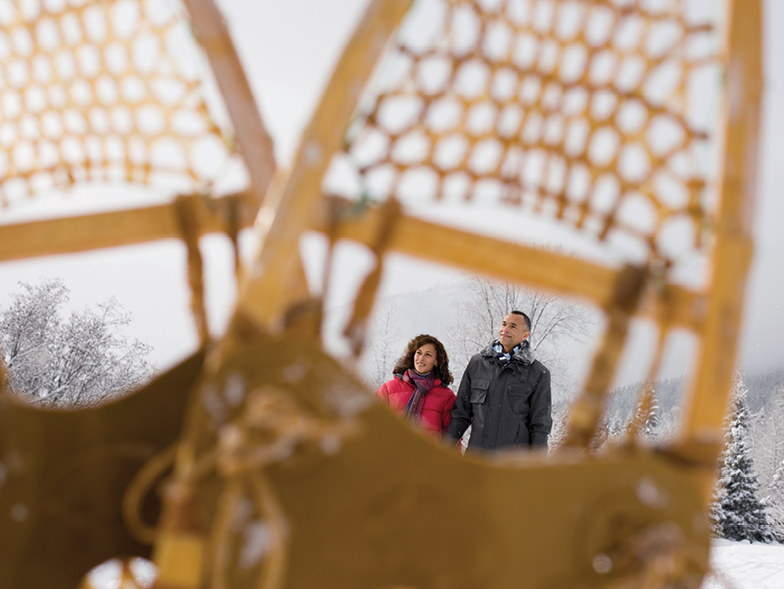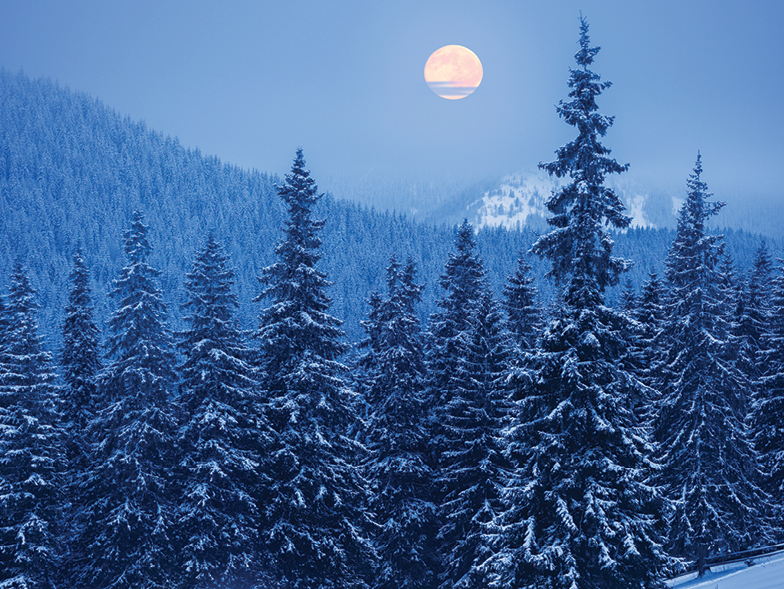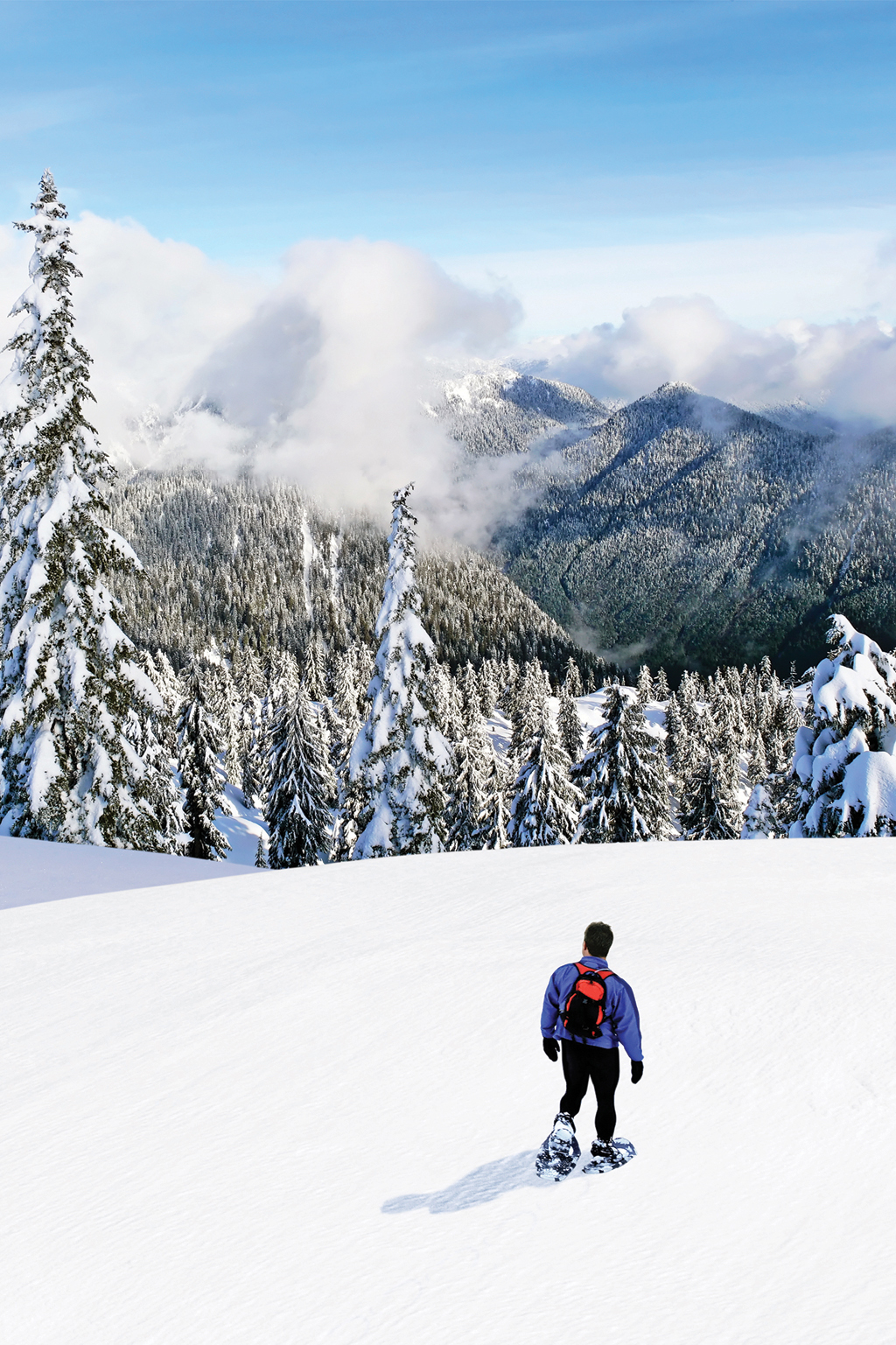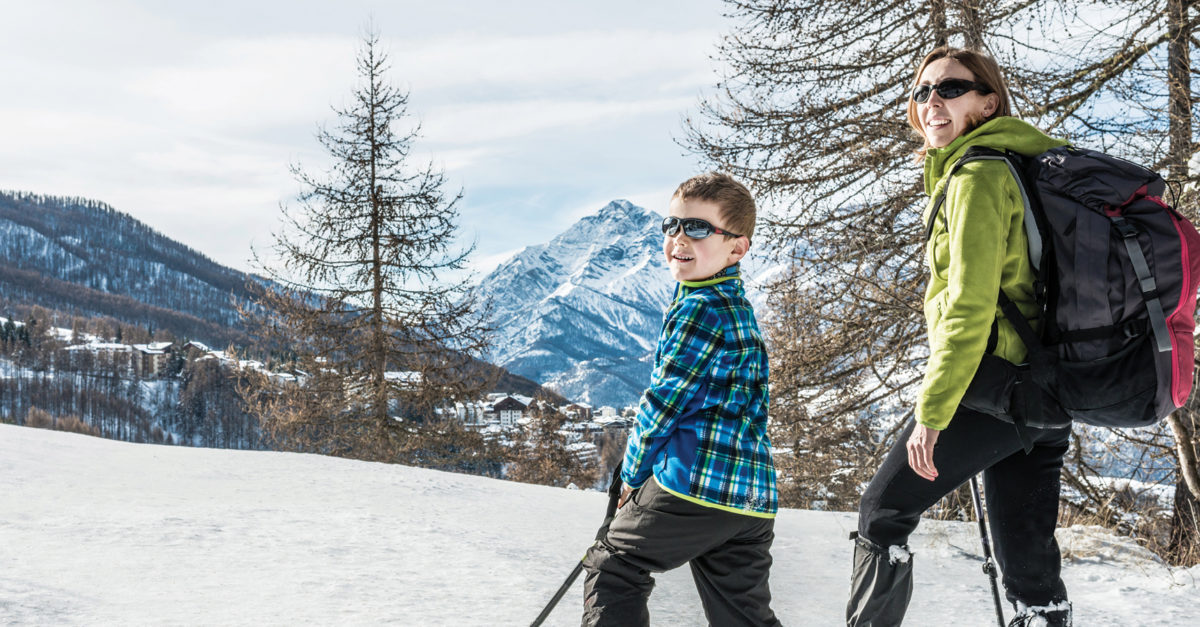A Walk in the Snow
Mark Elmore, the former sports director of the United States Snowshoe Association (USSSA), reveals why snowshoeing is so enjoyable, accessible, affordable, and invigorating.

Has snowshoeing become more popular in recent times?
Yes. I started snowshoe racing in the late eighties. At that time, the sport was very regionalized; there was no coordination or collaboration in different parts of the country. The USSSA organized the National Snowshoe Championship Program in 2000 and offered the inaugural US National Snowshoe Championship event in 2001 in Plattsburgh, New York.
We’ve certainly seen the popularity of the sport grow, especially in the US. Over the past decade or so, the sales of snowshoes have outpaced the sales of cross-country skis. By and large, people who are on snowshoes are doing so recreationally: they like to get out and enjoy the outdoors in winter and are looking to burn calories, maintain weight, and improve their health and fitness.
Is snowshoeing more cost-friendly than skiing?
Absolutely. That’s one of the reasons for its popularity. In fact, in 2002, I was invited to an outdoor symposium in Turin, Italy, about mountain culture. I talked about how and why, in America, alpine ski centers were diversifying into snowshoeing to attract different customers and generate more revenue. Alpine skiing is obviously extremely popular in Europe, yet they were experiencing the same things we were.
After all, a family of four can easily spend several hundred dollars on a ski trip between the travel, equipment rental, lift tickets, and lodging. On both sides of the Atlantic, fewer people are willing to spend that kind of money, but they are still looking for a way to enjoy the outdoors during winter. Snowshoeing is a great medium to do that. For cross-country ski centers, it became a relatively cost-effective way to develop trail systems and rent snowshoes. They’re attracting families with some members who want to spend a day snowshoeing while the others are skiing, as well as a whole new set of customers who are interested in snowshoeing rather than skiing.
Is it easy to master?
I’ve always said that if you can walk, you can snowshoe. There are no special skills you need to learn. It’s not like cross-country skiing, where you must learn how to control yourself on hills, turn, and stop. In contrast, first-time snowshoers know what they’re doing within the first ten or fifteen minutes. I think that simplicity speaks to a lot of people.
It’s also great for multigenerational outings. If you have a larger family, you could put the kids up front breaking trails through the snow, which will slow them down and wear them out, followed by Mom and Dad in the middle of the group, who are just packing down the trail the kids break, and then Grandma and Grandpa in the back walking on a nice, packed trail, which makes it much easier for them.
You also don’t need to go anyplace special to get out and enjoy it. You can snowshoe in your backyard or visit a nearby park, forest, or Nordic center with trails—just about anywhere there’s snow. And you don’t need a ton of it, just a few inches covering the ground.

Is snowshoeing a good workout?
Snowshoeing is a strenuous activity because you’re often in deeper snow, at least six inches, which is going to create a heavy-duty, full-body workout, no matter how fit you are or what type of terrain you’re traversing. You’re going to pump up your heart rate, burn calories, and get sweaty.
It’s funny. I used to try to convince cross-country skiers to give snowshoeing a shot. They’d say, “Why would I want to snowshoe? I can be on skis, gliding downhill without any effort. With snowshoeing, you’ve got to work to go up and come down.” Even skiers know you don’t get a break on snowshoes!
How should one prepare for snowshoeing?
How well you prepare can make or break your outing. You’ll want to wear gloves and sunglasses as well as multiple layers of zippered clothes that will pull the moisture away and allow you to add or remove layers to adjust your body heat. You also must hydrate and replenish food, especially if you’re out for a while in very cold weather. You must be smarter than Mother Nature and Old Man Winter because they just don’t care.
What’s the biggest misconception about the sport?
When you say the word snowshoes to somebody, they immediately think you’re talking about wooden-tennis-racket-looking things that you waddle around in like a duck, which doesn’t sound very sexy, appealing, or fun. And nothing is further from the truth. The modern snowshoe is designed so that it’s comfortable, easy to use, relatively cost-effective, and pretty much bulletproof. If something breaks, the major manufacturers will often repair or replace the broken item at no cost.
Are poles necessary?
On the racing scene, poles aren’t considered necessary, and, in some instances, they aren’t even allowed. On the recreational side, poles can be a very useful resource to have, especially in deeper snow or softer snow, going uphill climbing, or carrying a backpack. One of the reasons snowshoeing is so good for your core development is because you constantly have to balance yourself on uneven surfaces, and poles help you do that. They also augment an upper-body workout because you’re using your arms, chest, back, and traps to work them.
Where can people get snowshoe equipment?
The choices for equipment are vast and varied. You can buy a relatively inexpensive set of snowshoes and poles for around $80 at a national retail chain. Or you can go to a sporting goods store like REI or Dick’s and buy a higher-quality pair for about $300.
The one thing I tell folks is, with established snowshoe brands, you’re going to pay a little more. But the dedication to craftsmanship, the design, and the warranty will often make up for that, especially if you’re going to use the equipment a lot. But if it’s just something you want to dabble in, they may not be for you. However, if you purchase a good high-tech pair of snowshoes, there’s very little future investment needed. If you take care of them, they’ll last a lifetime.
Can you describe the joy you’ve received from snowshoeing?
It’s hard to put into words. There’s something primal about being out in harsh weather conditions, whether it’s a snowstorm, a rainstorm, or a thunderstorm. If the weather is out of our control, we’re at the mercy of it—and snowshoeing allows us to experience some of that on its own terms.
One of my fondest memories of my early days of snowshoeing was going out after dark, with a full moon and cloudless sky, in the field behind my house in upstate New York. When I looked back and saw this long line of single tracks that I made across the field, it felt like I was charting my own path, which was magical. So it has been something really deep-seated for me for a long time because I’ve always loved winter and winter sports. Snowshoeing has taken me places I’d never been and allowed me to enjoy being out in winter weather in a way that I never had before. It’s a really special experience.









